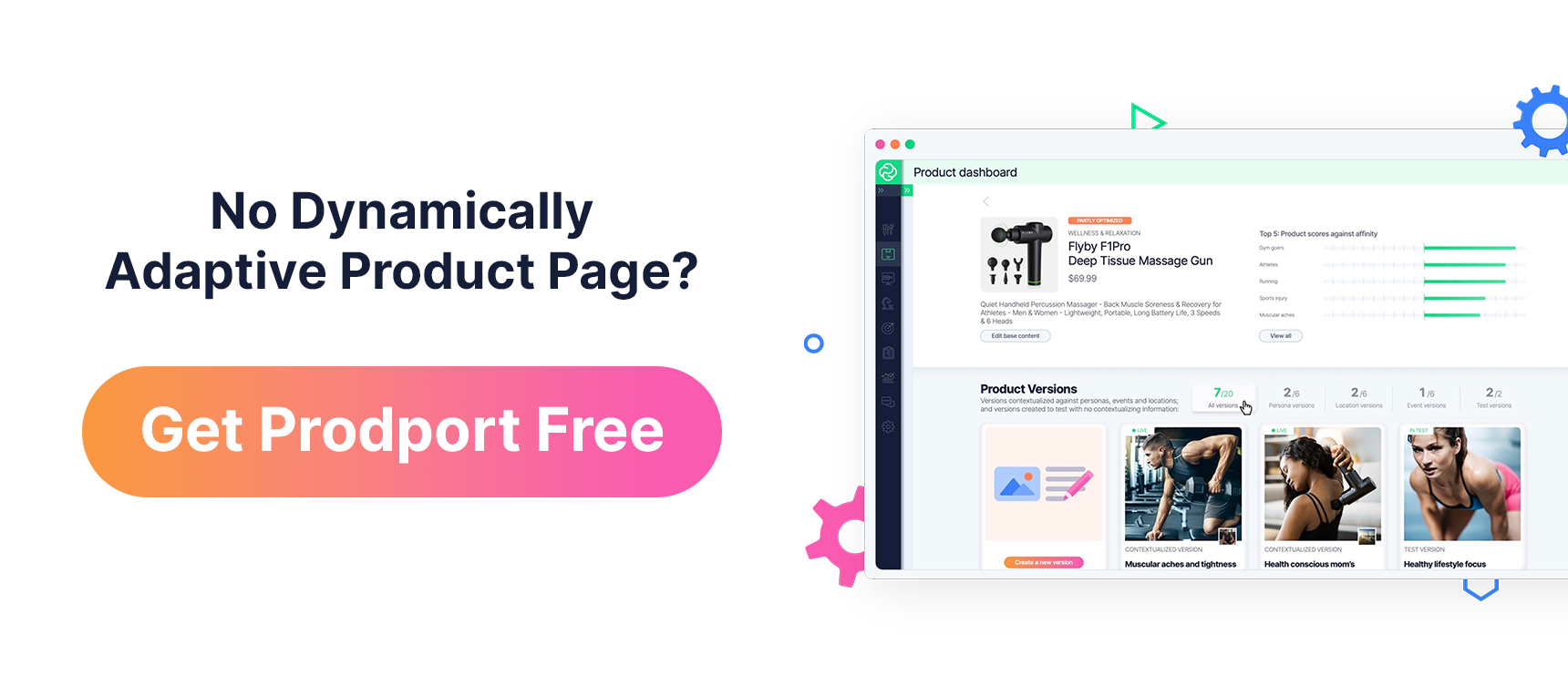We frequently get asked the question how Prodport is different to your standard Site Optimization Tool such as Optimizely, Trbo, Dynamic Yield, ABTasty, Adobe Target, optimizing and personalizing your website. Let’s call them Site Optimizers (SO).
Here’s the truth: on the highest level, this long parade of SOs and Prodport perform the same function at the end of the day, which is to dynamically update product page content based on customer data and testing strategy. However, there is one key difference—Prodport takes an entirely different approach driven by one crucial challenge: the product page is by far the most complex page in the entirety of an online shop.
Why is that exactly? Let’s break it down.
A typical webpage is quite simple. It consists of a structured set of HTML elements which come together to display the desired content. But SOs aside, it is always the same content for one page, a 1:1 mapping, so to speak.
If you do decide to bring SOs into the mix, mapping becomes n:1. That is because SOs allow each HTML element on a page to display any content for the purposes of personalization and/or optimization. The SOs we’ve listed above do this flawlessly, giving you the capacity to easily create truly dynamic webpages.
However, the product page is an entirely different beast. The key difference here is that the product page does not start out at a 1:1 mapping, as the elements house different content depending on the product being displayed by default. This means, even without personalization or testing, we have an n:1 relationship of content to elements. But with the addition of dynamic content, we effectively achieve a n*m:1 relationship.
And it is at this point where your standard SO falters at dealing with such complexity. Not to say that producing a similar effect with an SO is completely out of the realm of possibility. It is possible, but at that point, you’d be working with a hacked solution simply because SOs just aren’t designed to handle those two dimensions. Cranking up the complexity factor, product pages can also consist of an entirely new natural dimension, one which deals with multiple SKUs under one PID, also known as variants. With the use of dynamic content, this page will have a n*m*k:1 mapping, which becomes too difficult to handle even by the standards of the best SO.
So, how does Prodport deal with this complex conundrum? We target the source of the problem, which calls for inherently resolving the disparity between the product and SKU dimensions. See, Prodport “thinks” in terms of products, not webpages – the product page is a given. In that regard, Prodport feels closer to a PIM in the way that you will deal with all your products and therein SKUs, and then introduce the concept of personalized content called product versions on the product level. This unique approach of concentrating all efforts on a single page is what gives Prodport the ability to decode the dimensions of that intricate yet essential page. It then brings all these two dimensions into the system as one cohesive element, and not a messy, inconvenient attempt at implementation of products.
The long and short of it is—Prodport is just better equipped to handle even the most intricate product pages. Rather than dealing with the individual components of a page within a SO, Prodport is automatically configured to directly understand the layout of your product page. The result is a more user-friendly, streamlined editing experience, akin to how you would manage products in a PIM, but with multiple product versions associated to each product which can now have separate content.
Can’t fully wrap your head around how Prodport works or differentiates itself? No worries! We’d be happy to show you the ropes. Get in touch with us to see Prodport in action, and learn how to boost your product page’s performance and drive revenue through personalization.

